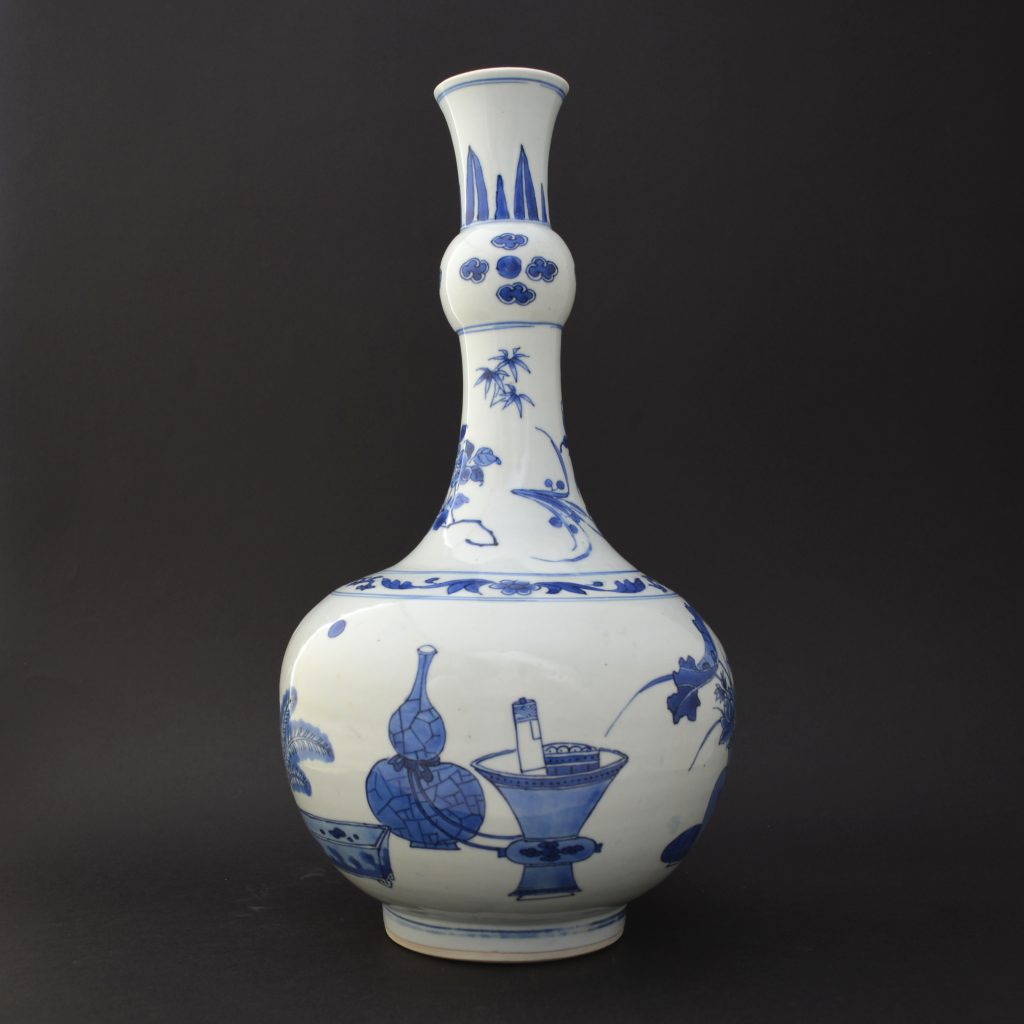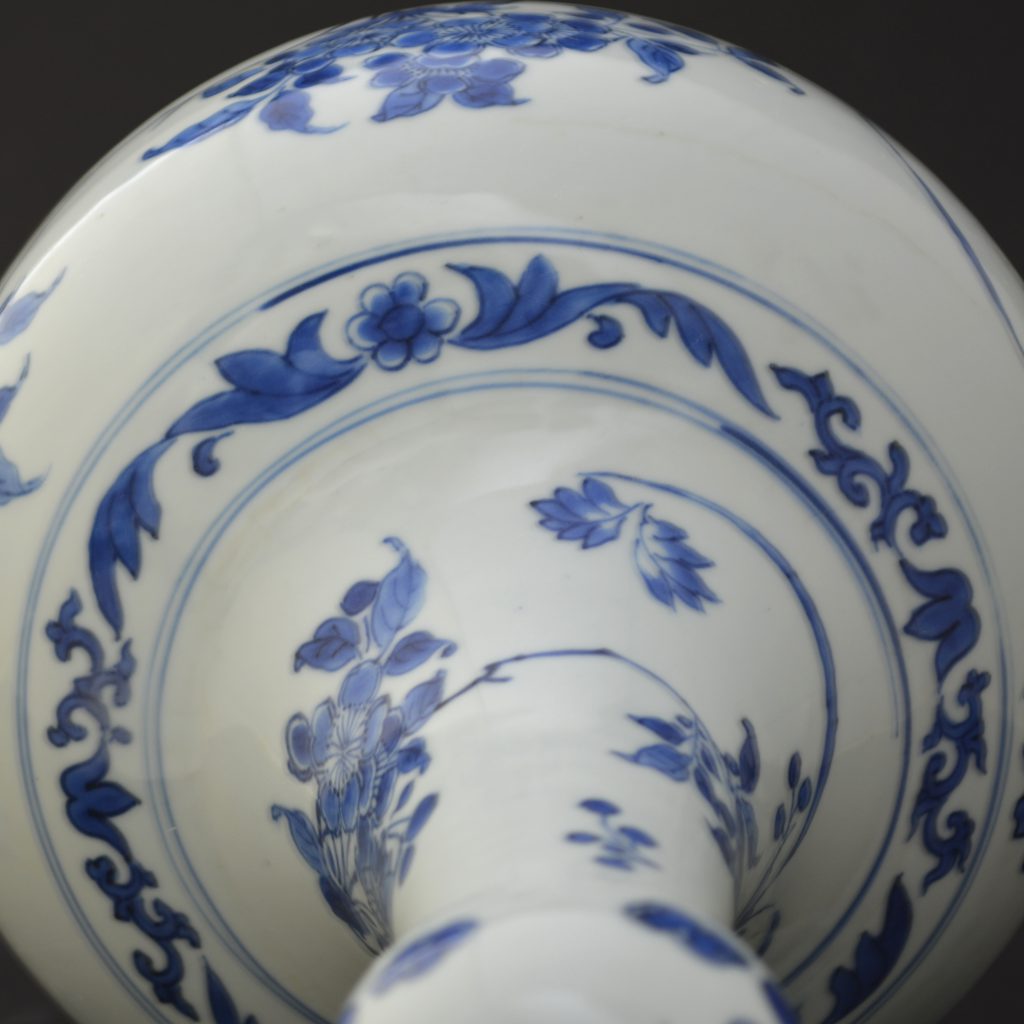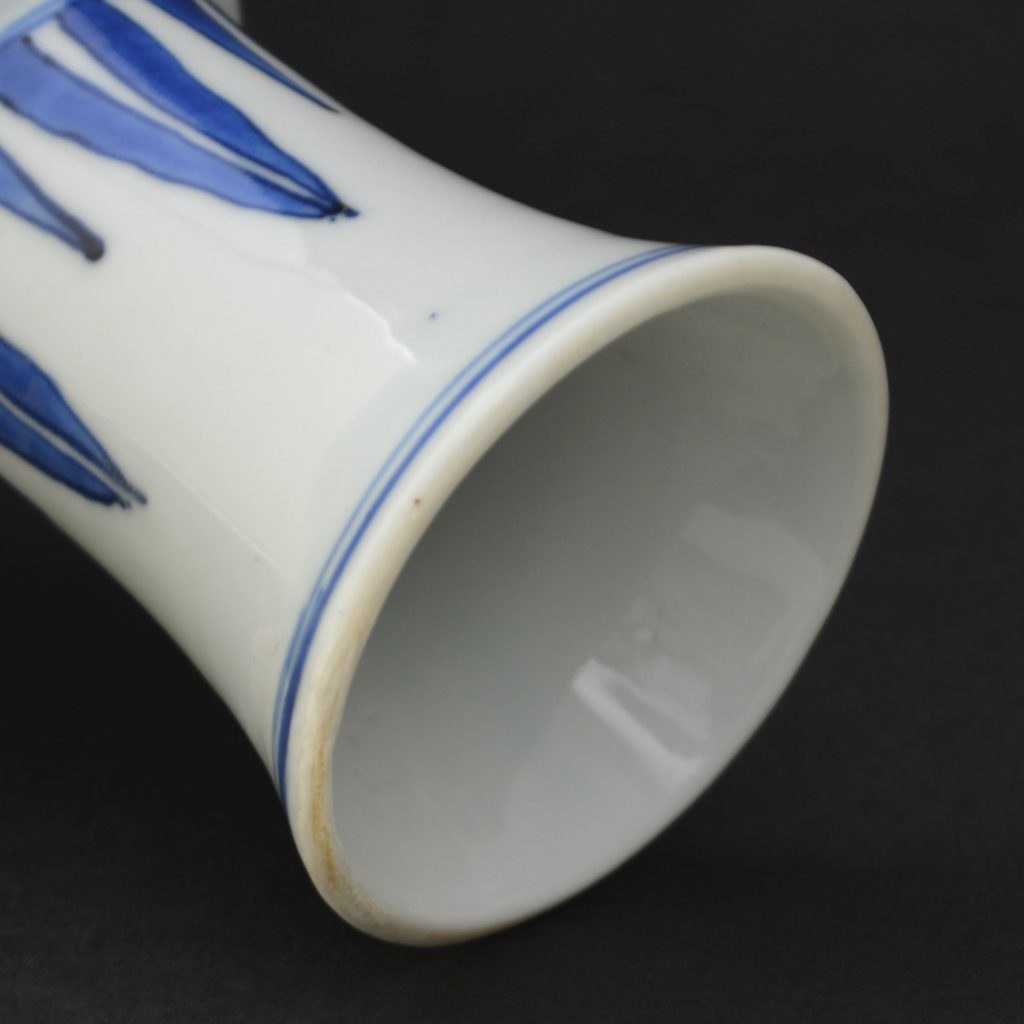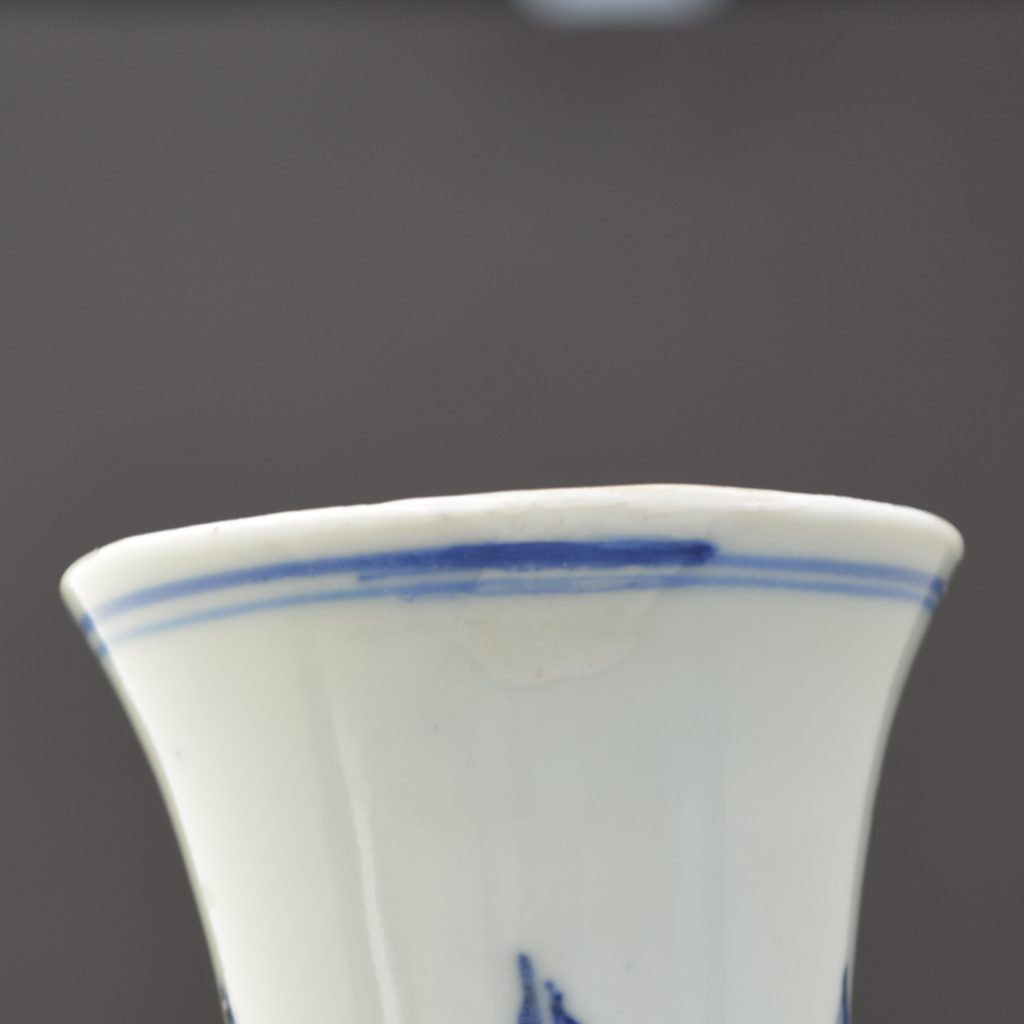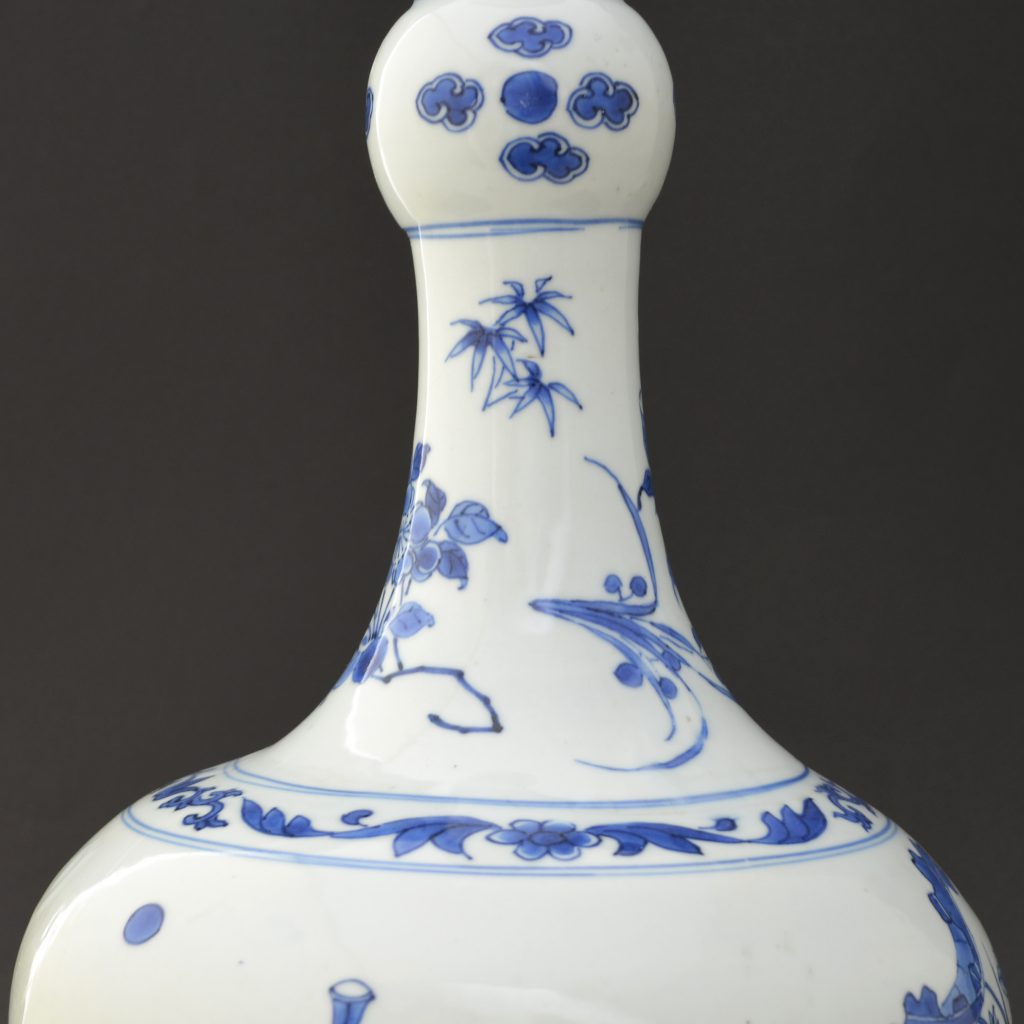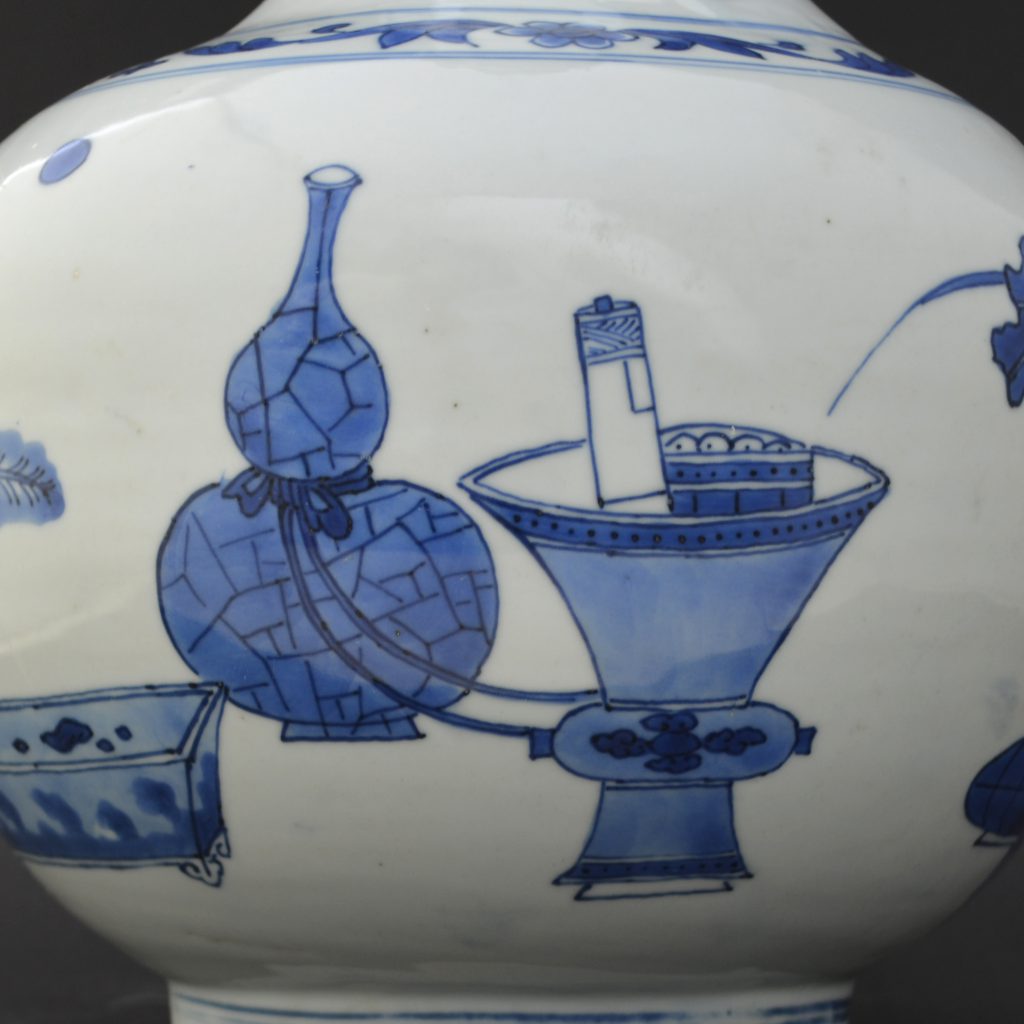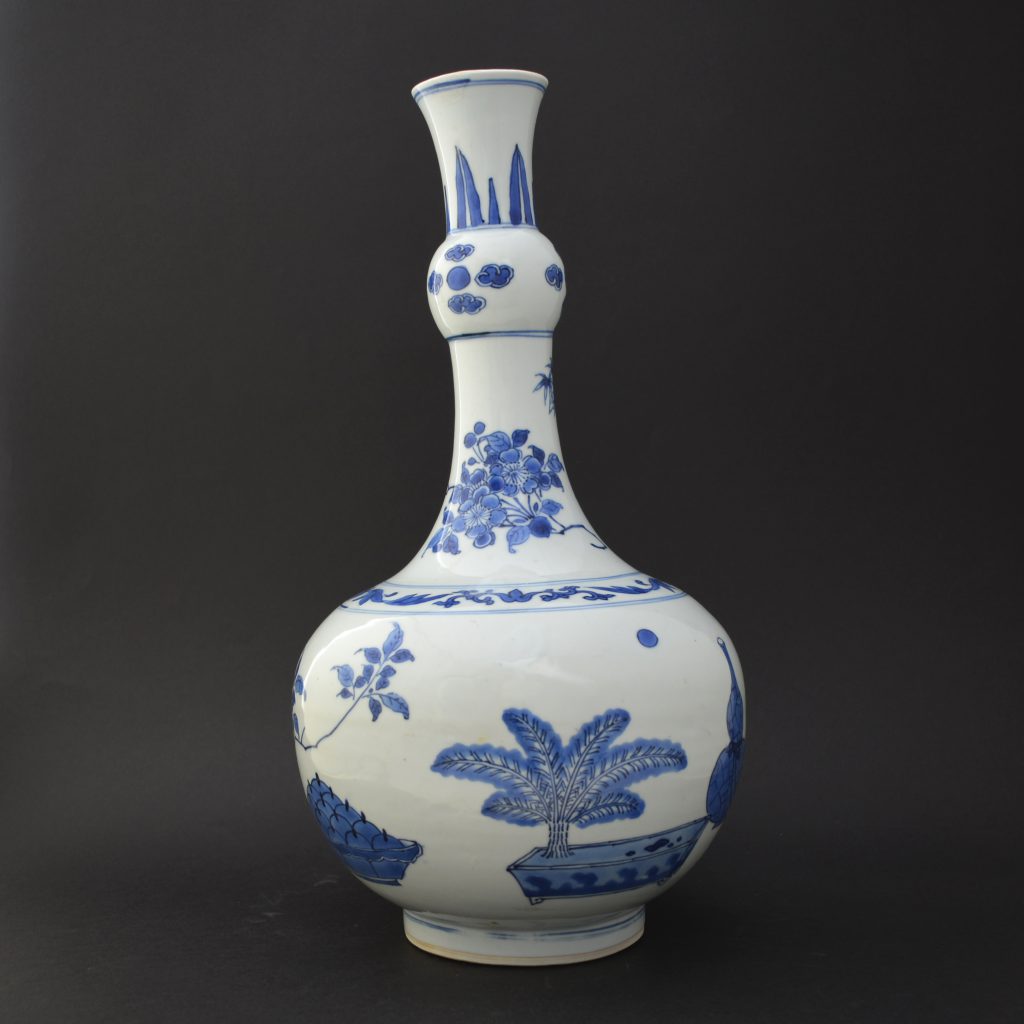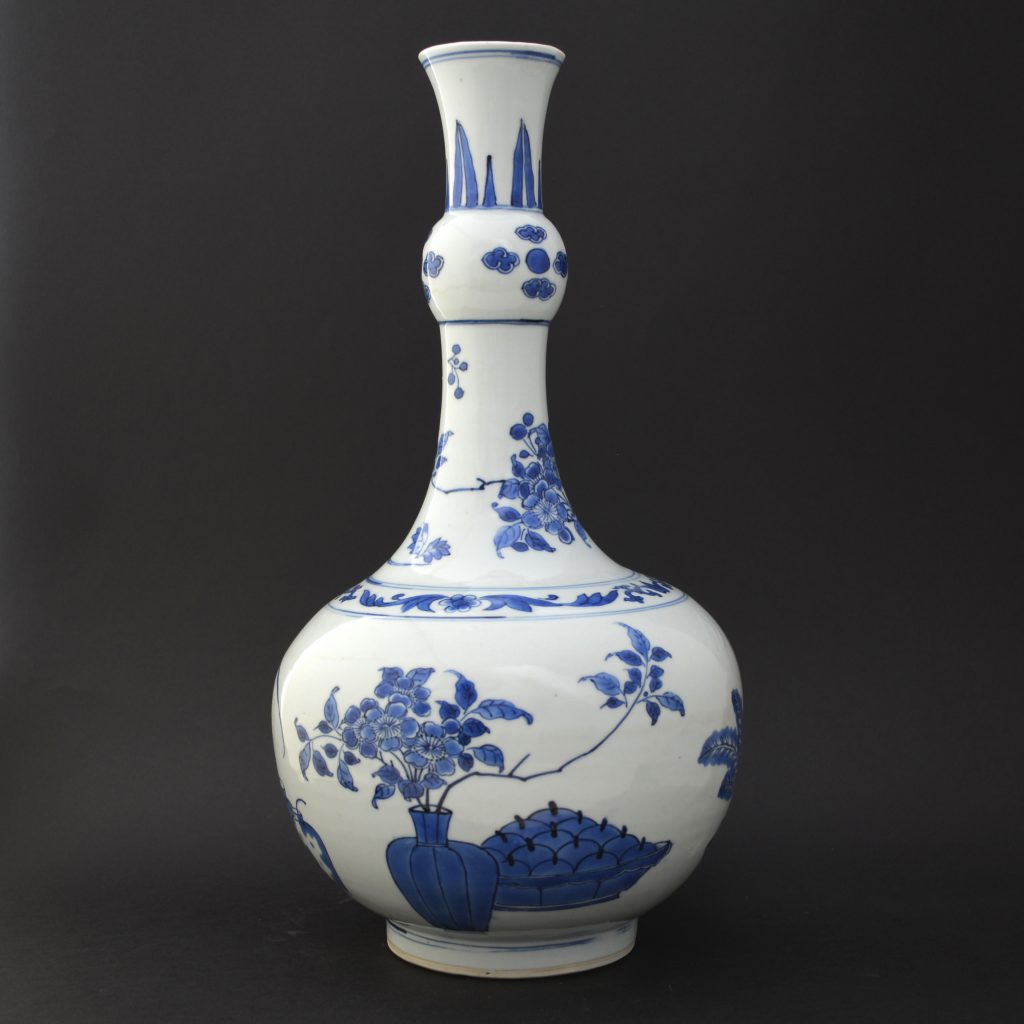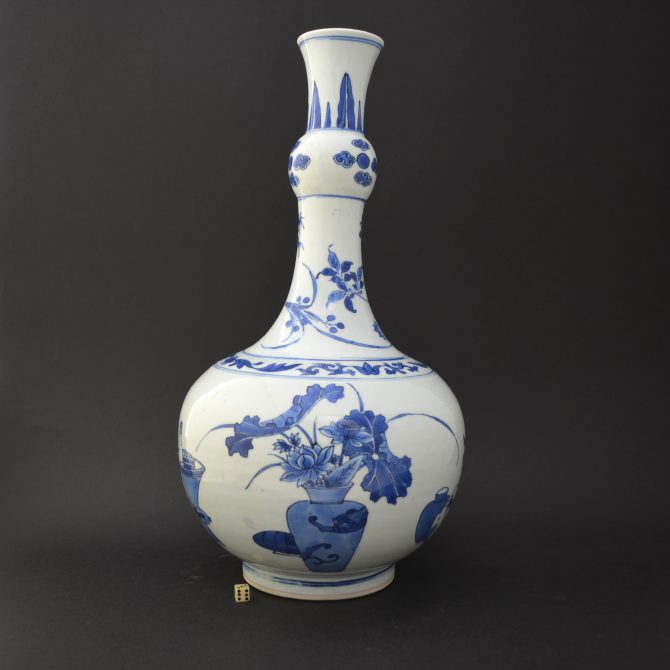
A Transitional Blue and White Porcelain Garlic Neck Vase, Chongzhen or Shunzhi c.1640 – 1650.
A Transitional Blue and White porcelain vase, Chongzhen or Shunzhi period c.1640-1650. Decorated with various objects on display, a dragon vase filled with lotus, a plate piled high with persimmon fruit, a double gourd vase with the ‘cracked-ice’ design, a Gu beaker with scrolls inside and a jardinière with a plant growing. The neck with various flowers including orchid and bamboo.
SOLD
- Condition
- In poor condition, the bulbous body has a long horizontal crack (covering approximately one third of the body) c.180 mm around the body. There is a missing chip to the rim which has been filled c.12 x 10 mm.
- Size
- Height : 36 cm (14 inches)
- Provenance
- N/A
- Stock number
- 24424
Information
The Transitional Period :
The roots of this unsettled period starts during the later part of Wanli`s reign (1573-1620). At the begging of his reign China was doing very well, new crops from the Americas such as peanuts, maize and sweet potatoes increased food production, while simplified taxes helped the state run smoothly. But this was not due to Wanli`s enlightened reign, but to his Mother championing a man that was to become the Ming dynasties most able minister, Zhang Zhuzheng (1525—1583). Wanli became resentful of Zhuzheng`s control but upon his death became withdrawn from court life. Between 1589 to 1615 he didn`t appear at imperial audiences, leaving a power vacuum that was filled by squabbling ministers. Mongols from the North raided as Japan invaded Korea. Wanli re-opened the silver mines and imposed new taxes but the money was lost due to corruption, as well as being frittered away by the indulgent Emperor himself . The next emperor of Ming China, Tianqi (1621-1627), was bought up in this self indulgent disorganised environment, at the very young age 15 his short reign started. He didn`t stand a chance. Tianqi made the mistake of entrusting eunuch Wei Zhongxian (1568-1627) who Anna Paludan in her excellent book "Chronicle of the Chinese Emperors" (Thames and Hudson, 1998) describes as "a gangster of the first order". Tianqi was deemed to have lost the Mandate of heaven by the Ming people. Tianqi`s younger brother, the last of the Ming Emperors, Chongzhen (1628-1644), was not able to save the situation. The systems of administration had broken down, corruption was rife and so when a sever famine broke out in 1628 nothing much could be done. Anna Paludan describes the tragic end to the great Ming Dynasty "The final drama was worthy of a Greek tragedy. The emperor called a last council in which `all were silent and many wept`, the imperial troops fled or surrendered, and the emperor, after helping his two sons escape in disguise, got drunk and rushed through the palace ordering the women to kill themselves. The empress and Tianqi`s widow committed suicide; the emperor hacked off the arm of one daughter before killing her sister and the concubines. At dawn he laid his dragon robe aside and dressed in purple and yellow, with one foot bare, climbed the hill behind the now silent palace and hanged himself on a locust tree". The Great Wall of China, started 2,000 years ago was built to protect China from the Northern barbarian hoards, it was often tested and sometimes failed. The Jin people invaded China, ruling the North between 1115 and 1234, it was their descendants the Manchus, Jurchens from south east Manchuria that took full advantage of the problems of the Ming dynasty. In 1636 they adopted a Chinese dynastic name, the `Great Qing` (Qing meaning pure). The first of the Qing emperors was Shunzhi (1644-1661) but for most of his reign his uncle ran the state. War raged on during this period and it wasn`t until the second Qing emperor Kangxi (1662-1722) that true peace was achieved. Kangxi was a wise and educated man, he became a highly successful emperor bringing China a long period of wealth and stability.
Lotus :
The lotus is one of the most important symbols in the Chinese art. This Buddhist emblem is a symbol of purity, as the perfect flower grows out of muddy ponds without a stain. The words for lotus in Chinese has the same meaning as to bind, connect (in marriage). It is one of the Eight Auspicious Symbols of Buddhism. It is the flower used to represent summer.
Plum Blossom :
Plum Meihua is one of the most important plants in Chinese art. Their flowers grow on knurled old angular branches, the flowers are fragile and pure, so they can be a symbol of vigour in old age as well as purity. The tree is the first to flower after the long hard winter, symbolically it can represent perseverance as well as renewal. This meaning is enhanced by a background of cracked-ice, the design can be seen as representing the end of winter and the beginning of spring with the ice of winter cracking to reveal a new year dawning. Branches of plum blossom convey the `Five Blessings` Meikai wufu, longevity, wealth, health, love of virtue and a peaceful death. The number five, an auspicious number to the Chinese, is taken from the five petals of the plum flower.
Plum and Cracked-Ice :
Plum Meihua is one of the most important plants in Chinese art. Their flowers grow on knurled old angular branches, the flowers are fragile and pure, so they can be a symbol of vigour in old age as well as purity. The tree is the first to flower after the long hard winter, symbolically it can represent perseverance as well as renewal. This meaning is enhanced by a background of cracked-ice, the design can be seen as representing the end of winter and the beginning of spring with the ice of winter cracking to reveal a new year dawning. Branches of plum blossom convey the `Five Blessings` Meikai wufu, longevity, wealth, health, love of virtue and a peaceful death. The number five, an auspicious number to the Chinese, is taken from the five petals of the plum flower. The design is shown as single plum blossom flowers scattered over cracked-ice or flowering plum blossom branches against the cracked surface of the ice. Jars, especially the so-called ginger-jars or Hawthorn jars , decorated with this design were very popular in England during the end of the 19th and the early years of the 20th century. Kangxi blue and white porcelain in general was highly sought at the time. It was made famous by the artist Whistler among others, and became a symbol of the Aesthetic movement. Prices for this type of Chinese blue and white porcelain, in real terms, reached far more than it would do today.
Orchids :
The natural habitat of Chinese orchids is secluded woodland, it is therefore connected with Confucian and Taoist ideals as well as that of the reclusive scholar. This is because the flower is rather small and they can sometimes only be found by their scent, thus the scholar was not self-seeking ; only his deeds and writings were to bring him notice. The orchid also symbolizes moral virtue.
